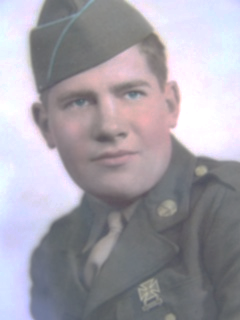In 1950, my Uncle, Corporal Robert Imrie, was declared killed in action in North Korea. His remains were not found. Corporal Imrie was awarded the Silver and Bronze Star for alertness and courage in the line of duty, and the Distinguished Service Cross for his “gallant and intrepid actions …saving his comrades from annihilation…”.
In 1992, I read about the Joint POW/MIA Accounting Command and the Armed Forces DNA Identification Lab and their efforts to recover and identify missing soldiers. I volunteered to participate in the identification process by providing DNA samples from our family in the hope that one day my Uncle would be identified and returned home.
In 2000, the remains of soldiers were identified during a joint US/North Korea excavation. The anthropologist leading the recovery noted the burial grounds on a farm in Kujang held the remains of three soldiers and other non-biological material evidence consistent with the Army infantry equipment of 1950. Between 2000 and 2007, the US and North Korea negotiated the return of the remains. The research, analysis, and DNA matching process was conducted.
On July 23, 2007, my family was notified that Corporal Imrie was one of soldiers whose remains were identified and that he would be returning home. The Army proceeded to provide Corporal Imrie and our family with the full complement of support and honors befitting Corporal Imrie’s sacrifice. After 57 years, he was buried with full honors in Arlington Cemetery. I relay this story so that others who are serving and/or who have lost a loved one in war will know that our Government will not stop working to bring them home, no matter how long it takes.
This article was submitted by Frank Murphy, Deputy Chief Financial Officer. His wife, Anne Imrie, wrote the article about the successful identification and return of her uncle, who had been classified as KIA during the Korean War.
